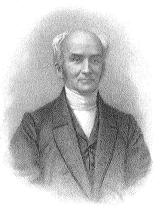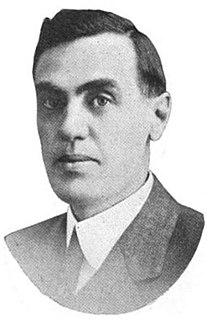Related Research Articles

Maxwell was a brand of automobiles manufactured in the United States of America from about 1904 to 1925. The present-day successor to the Maxwell company is Stellantis.

A grader, also commonly referred to as a road grader, motor grader, or simply a blade, is a form of heavy equipment with a long blade used to create a flat surface during grading. Although the earliest models were towed behind horses, and later tractors, most modern graders are self-propelled and thus technically "motor graders".

The Highland Park Ford Plant is a former Ford Motor Company factory located at 91 Manchester Avenue in Highland Park, Michigan. It was the second American production facility for the Model T automobile and the first factory in history to assemble cars on a moving assembly line. It became a National Historic Landmark in 1978.

Fordson was a brand name of tractors and trucks. It was used on a range of mass-produced general-purpose tractors manufactured by Henry Ford & Son Inc from 1917 to 1920, by Ford Motor Company (U.S.) and Ford Motor Company Ltd (U.K.) from 1920 to 1928, and by Ford Motor Company Ltd (U.K.) from 1929 to 1964. The latter also later built trucks and vans under the Fordson brand.

Fageol Motors was a United States manufacturer of buses, trucks and farm tractors.

The New York Daily Mirror was an American morning tabloid newspaper first published on June 24, 1924, in New York City by the William Randolph Hearst organization as a contrast to their mainstream broadsheets, the Evening Journal and New York American, later consolidated into the New York Journal American. It was created to compete with the New York Daily News which was then a sensationalist tabloid and the most widely circulated newspaper in the United States. Hearst preferred the broadsheet format and sold the Mirror to an associate in 1928, only to buy it back in 1932.

Khaleej Times is a daily English language newspaper published in Dubai, United Arab Emirates. Launched on April 16, 1978, Khaleej Times is the UAE's longest-running English daily newspaper.

Karrier was a British marque of motorised municipal appliances and light commercial vehicles and trolley buses manufactured at Karrier Works, Huddersfield, West Yorkshire, by Clayton and Co., Huddersfield, Limited. They began making Karrier motor vehicles in 1908 in Queen Street South, Huddersfield. In 1920, H.F. Clayton sold Clayton and Co's Huddersfield business into public listed company Karrier Motors while keeping their Penistone operation separate. Mechanical and electrical engineers Clayton & Co Penistone, remain active in 2020 as Clayton Penistone Group.
Gravely, of Brillion, Wisconsin, is a manufacturer of powered lawn and garden implements which it describes as "walk-behind, zero turn and outfront mowers". It started as a manufacturer of "walk-behind" or two-wheel tractors.

Timothy Gilbert was an American piano manufacturer, abolitionist and religious organizer in Boston, Massachusetts. His brother Lemuel Gilbert was also a piano manufacturer.

CKMX is a radio station, broadcasting at 1060 AM in Calgary, Alberta, and owned by Bell Media. Its comedy format is branded on-air as "Funny 1060 AM". CKMX's studios are located on Centre Street in Eau Claire, and its transmitter site is near Southeast Calgary. At night CKMX can be heard as far west as Battle Ground and Snohomish, Washington. It can also be heard on shortwave on 6030 kilohertz via its repeater CFVP, reaching western North America.

Two-wheel tractor or walking tractor are generic terms understood in the US and in parts of Europe to represent a single-axle tractor, which is a tractor with one axle, self-powered and self-propelled, which can pull and power various farm implements such as a trailer, cultivator or harrow, a plough, or various seeders and harvesters. The operator usually walks behind it or rides the implement being towed. Similar terms are mistakenly applied to the household rotary tiller or power tiller; although these may be wheeled and/or self-propelled, they are not tailored for towing implements. A two-wheeled tractor specializes in pulling any of numerous types of implements, whereas rotary tillers specialize in soil tillage with their dedicated digging tools. This article concerns two-wheeled tractors as distinguished from such tillers.

The Oliver Farm Equipment Company was an American farm equipment manufacturer from the 20th century. It was formed as a result of a 1929 merger of four companies.: the American Seeding Machine Company of Richmond, Indiana; Oliver Chilled Plow Works of South Bend, Indiana; Hart-Parr Tractor Company of Charles City, Iowa; and Nichols and Shepard Company of Battle Creek, Michigan

Osborn Engineering Company was a British manufacturer of motorcycles, which sold its machines under the OEC brand name.
Gottfried Schlöemer or Godfrey Schlöemer (1842–1921) was a coopersmith, mechanical engineer, and inventor who lived in the south part of Milwaukee, Wisconsin, US. His ancestors were from Germany and Prussia, as was his wife.

The Texas Aero Corporation of Temple, Texas was formed about 1927 to construct passenger and mail light aircraft. The company's origin can be traced back to George W. Williams Texas Aero Manufacturing Company of 1911.

The Traffic Motor Truck Corporation (TMTC) was a St. Louis truck manufacturer from 1917 to 1929. It used Continental engines chiefly, and sometimes Gray Victory engines. The company was based at 5200 North Second Street. Guy C. Wilson was TMTC's president and Theodore C. Brandle was its vice president. Stephen W. Avery was the company's advertising manager.
The Temple Boll Weevils were a minor league baseball team which played their home games at Woodson Field in Temple, Texas as a member of the Texas League from 1905 to 1907. Local newspapers took to calling them the "Cotton Bugs," a nickname coined by the Galveston Daily News.
KOG was a short-lived AM broadcasting station, licensed to the Western Radio Electric Company in Los Angeles, California. It was issued its first license, as KZC, in December 1921, changed its call letters to KOG a few weeks later, and was deleted less than a year and one half after its start.

Byron S. Payne was an American attorney and politician from South Dakota. A Republican, he was best known for his service as the state's attorney general from 1919 to 1923.
References
- ↑ $50,000 tractor plant will be established in Temple, Temple Daily Telegram, 4 January 1920
- ↑ Advertisements, The Bartlett Tribune and News, Bartlett, Texas, Vol. 34, No. 48, Ed. 1, Friday, May 21, 1920, page 15
- ↑ Temple in Vintage Postcards - Postcard History Series, Michael and Mike LeFan, Arcadia Publishing, 2004, ISBN 0738529397, 9780738529394, page 30
- ↑ Advertisement, The Bartlett Tribune and News (Bartlett, Tex.), Vol. 34, No. 49, Ed. 1, Friday, May 28, 1920, page 2
- ↑ Historic Temple: An Illustrated History, Patricia K. Benoit, HPN Books, 2009, ISBN 1893619966, 9781893619968, page 41
- ↑ Prairie Queen Motor Arrives, Temple Daily Telegram, date unknown but probably mid March 1920
- ↑ Prairie Queen is regular tractor, Temple Daily Telegram, about 24 or 25 May 1920
- ↑ Temple - Images of America, Michael and Nancy Kelsey, Arcadia Publishing, 2010, ISBN 0738580236, 9780738580234, page 119
- ↑ Prairie Quenn is howling success, Temple Daily Telegram, late may or early June 1920
- ↑ Temple Daily Telegram, 30 January 1921
- ↑ Prairie Queen Tractor demonstration, The Bartlett Tribune and News (Bartlett, Tex.), Vol. 34, No. 49, Ed. 1, Friday, May 28, 1920, page 4
- ↑ Tractor Made in Temple Put on Exhibition, Temple Daily Telegram, late December 1920 or early January 1921
- ↑ Advertisement, The Bartlett Tribune and News (Bartlett, Tex.), Vol. 36, No. 9, Ed. 1, Friday, September 9, 1921, page 5
- ↑ Standard Catalog of Farm Tractors - 2nd Edition, C.H. Wendel, Krause Publications, 2011, ISBN 1440227950, 9781440227950, page 618
- ↑ "prairie queen tractor" Tractor Plant is moved location in business part, Vol. 15, No. 142, Ed. 1 Sunday, August 27, 1922, page 3, Retrieved: 8 June 2015
- ↑ "prairie queen tractor" Advertisement, Temple Daily Telegram (Temple, Tex.), Vol. 16, No. 25, Ed. 1 Sunday, December 17, 1922, page 4, retrieved 8 June 2015